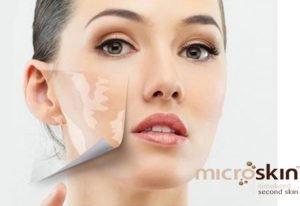
Can you cover vitiligo with makeup
Vitiligo is a long-term skin disorder that is produced due to color pigment loss in the skin. A person begins to lose normal pigmentation in spots, causing pale or white patches of skin throughout the body. Vitiligo occurs when the cells die or stop functioning that produces melanin. And also affect the hair. Most often, these patches start on areas of skin that are exposed to the sun. It is more visible to people with dusky skin. Vitiligo is not life-threatening, but it can be embarrassing.
If you wish to hide Vitiligo patches, you can apply a little make-up to make your skin tone even. Use specialized make-up products to treat discoloration of the skin or heavy-duty make-up like skin camouflage. Regular make-up can be used to manage the whitening of your eyebrows.
We have come up with the best three methods for you. You don’t need any special treatment, just a little make-up, a few moments, and you are ready to go.
Method 1: Use skin camouflage
Use specialized make-up that is designed to cover patches caused by vitiligo, known as camouflage or cover make-up. Both men and women commonly use skin camouflage. It does not give the effect of make-up. It just makes the skin tone even i.e., it smoothes discolored patches of skin. You can easily find skin camouflage from your dermatologist’s office. Be careful while selecting the shade; it should match your natural skin tone. It is safe and can be used by both adults and children.
- Before using skin camouflage, clean the skin where you are planning to apply the product. Read out the instructions on the pack before using any product on your skin.
- Moisturize your skin after you have cleaned it. You have to apply a few layers of skin camouflage; moisturizer will help you to even the color tone. If your skin type is dry, then go for a petroleum-based moisturizer. If you have oily skin, go for noncomedogenic moisturizer.
- While applying skin camouflage start from the pale patch of skin. Before using the second layer, wait for 5 minutes, let the first layer dry before applying a second.
- Blend the tone of your make-up to the surrounding skin of the patch to look it natural. Now you can apply your usual make-up over camouflage make-up.
- Apply a thin layer of dark powder on our skin to give it a smooth and natural look. It will be more effective if you apply the powder using a brush.
Method 2: Depigmented eyebrows
Some people suffering from vitiligo may face the problem of whitening eyebrows hair. Choose the shade of eyeshadow that matches the color of your natural hair.
- Trace the underside of your eyebrow and give it a natural direction by applying gentle strokes of your eyeshadow. Repeat these same steps to trace the top of your eyebrows.
- To remove clumps, brush out the eyebrows to give a smooth effect. Run the brush over your eyebrows in the direction of the hair.
- After you smoothed, your eyebrows use eyeshadow to darken the center of eyebrows. Draw a line through the center of the eyebrow instead of edges to give it a natural look. To make this look soft, blend it into the eyebrow with the help of a brush.
- Use an eyebrow gel to prevent make-up from smearing or fading throughout the day. Once you have finished applying eyebrow make-up, apply a single layer of gel over both eyebrows.
Method 3: Micropigmentation
Micro-pigmentation is a kind of permanent cosmetics, just like getting a tattoo. Pigments are directly implanted into the skin using an instrument. This method is more effective on people with darker skin, discoloration patches around the surface. After this process, you don’t need to apply make-up in the future. Be careful about the pros and cons of micro-pigmentation before you go for this. Your skin may be difficult to match or may fade over time, so be cautious if you are planning to go for this process.
This treatment is expensive; make sure that this cosmetic surgery fits into your budget. Please discuss with your dermatologist, give him your medical history to make sure that this treatment is safe for you. It may take 4 to 6 weeks for a full recovery. Take all your precautions during this period and go to a regular checkup to your dermatologist.
“Vitiligo is a blessing in disguise. It makes you a better person when you accept your imperfections and those of others. But vitiligo is just another difference, just like long hair, tiny ear. This difference makes you unique.”